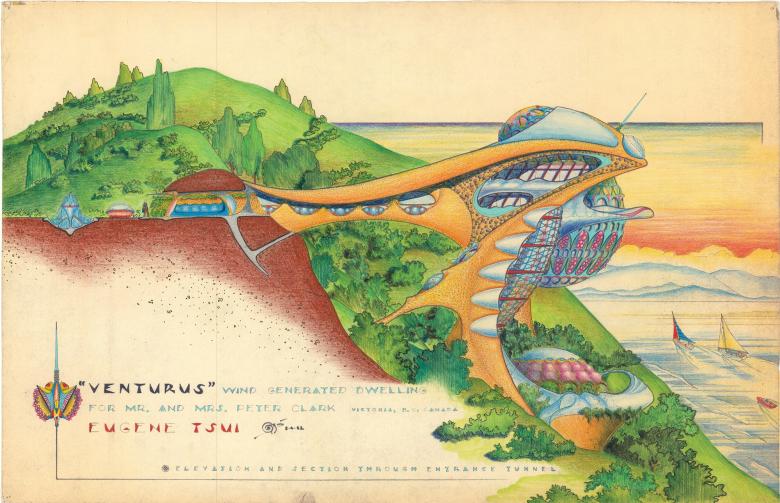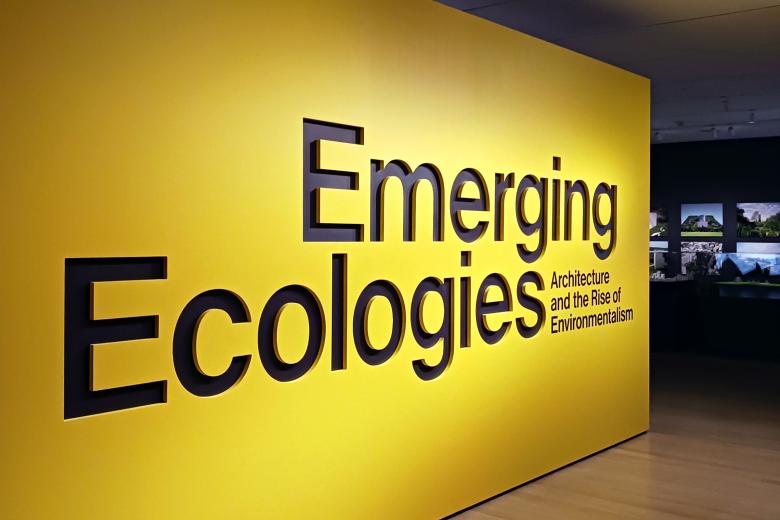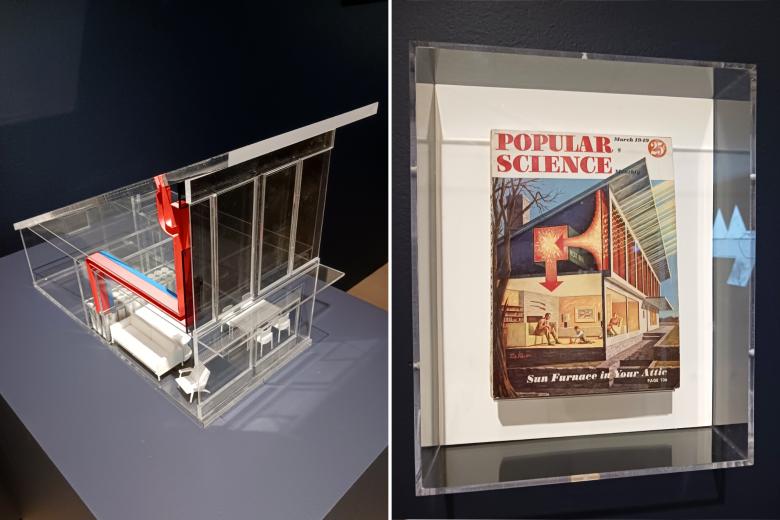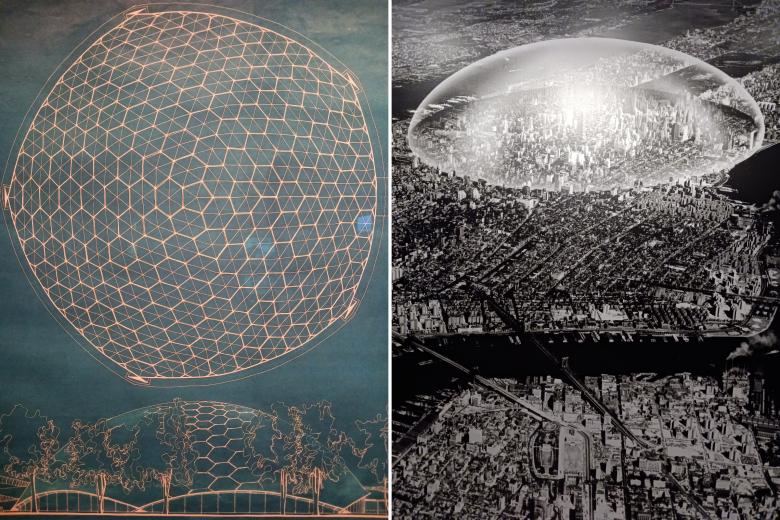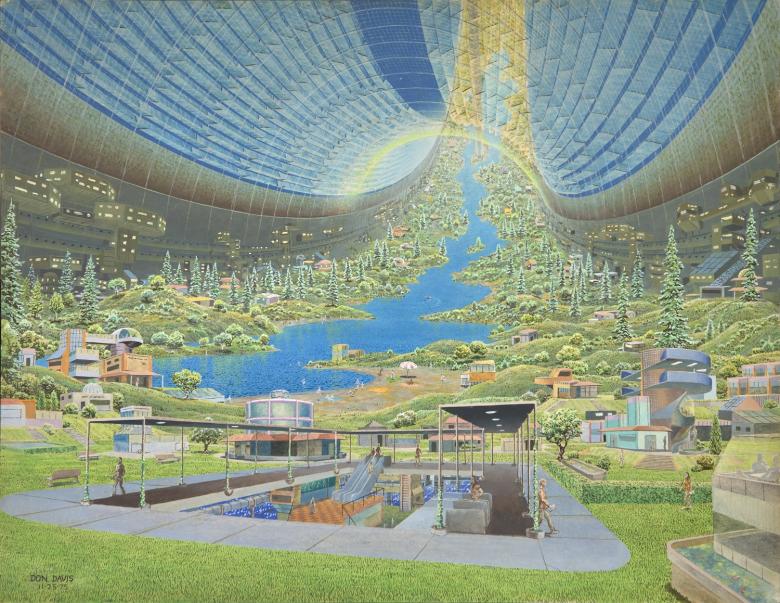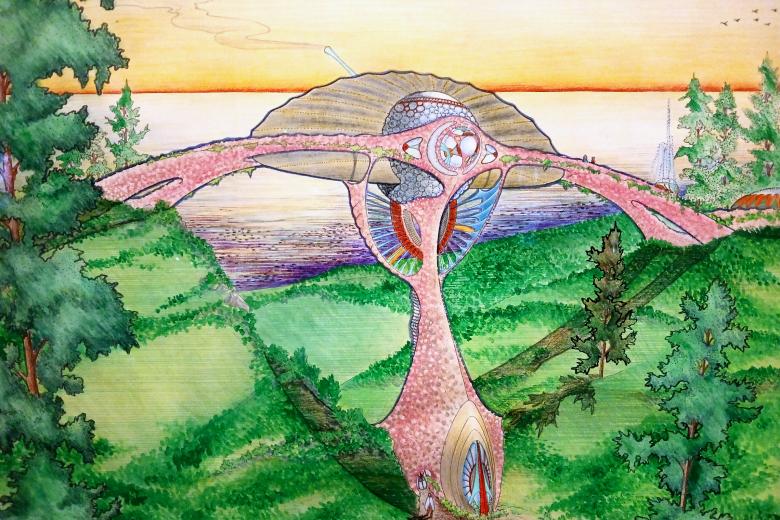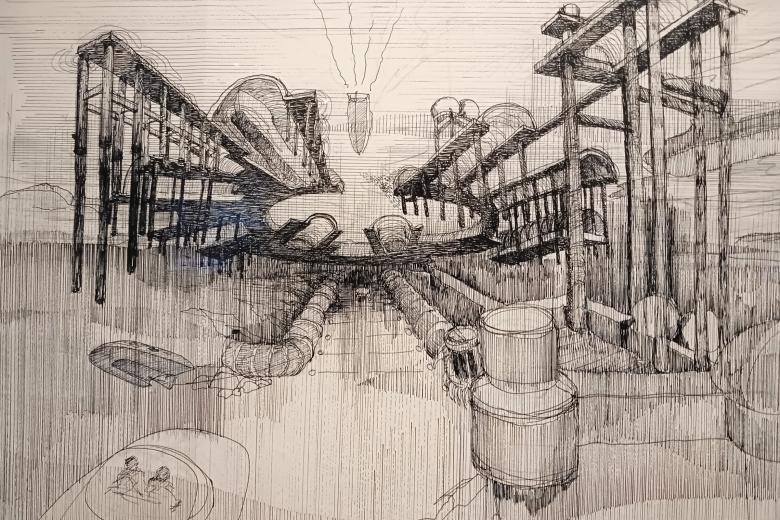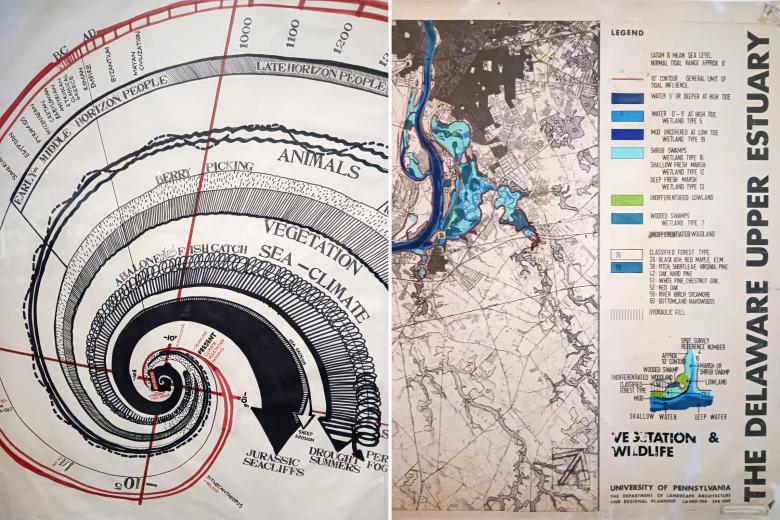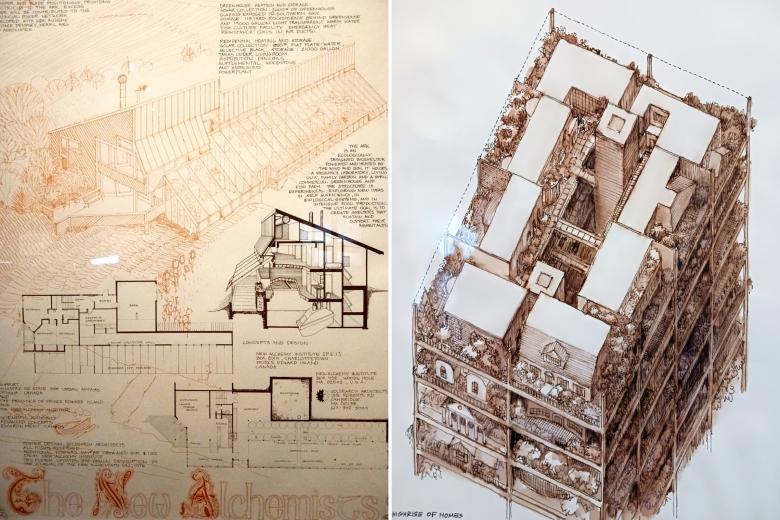21. September 2023
Eugene Tssui, "Venturus" Wind Generated Dwelling for Mr. and Mrs. Peter Cook, Victoria, BC, Canada, 1982 (Collection Eugene Tssui)
Emerging Ecologies: Architecture and the Rise of Environmentalism, the inaugural exhibition from the Emilio Ambasz Institute for the Joint Study of the Built and Natural Environment at the Museum of Modern Art (MoMA), opened to the public on September 17.
Billed as the “first major museum exhibition to survey the relationship between architecture and the environmental movement in the United States,” Emerging Ecologies presents drawings, models, and other artifacts that cover roughly six decades: from the mid-1930s to the mid-1990s. Even so, the heart of the exhibition is really just two decades: the sixties and seventies, when dramatic social and cultural change combined with a strong environmental awareness to foster new approaches for architecture.
Geodesic domes, earth-sheltered houses, outer-space habitats — these are just a few of the alternative environments that were envisioned at the time but are now almost shorthand for the era's optimism and, some might argue, naïveté. Seeing so many iconic and lesser-known works of environmental architecture together now, at a time when optimism is hard to come by, is refreshing: a reminder that architects addressing this century's climate crises need to do it with creativity and imagination.
Below is a visual tour through Emerging Ecologies, which is on display in MoMA's third-floor architecture galleries until January 24, 2024.
Emerging Ecologies: Architecture and the Rise of Environmentalism was organized by Carson Chan, director of the Emilio Ambasz Institute for the Joint Study of the Built and Natural Environment, with Matthew Wagstaffe, Dewi Tan, and Eva Lavranou.
